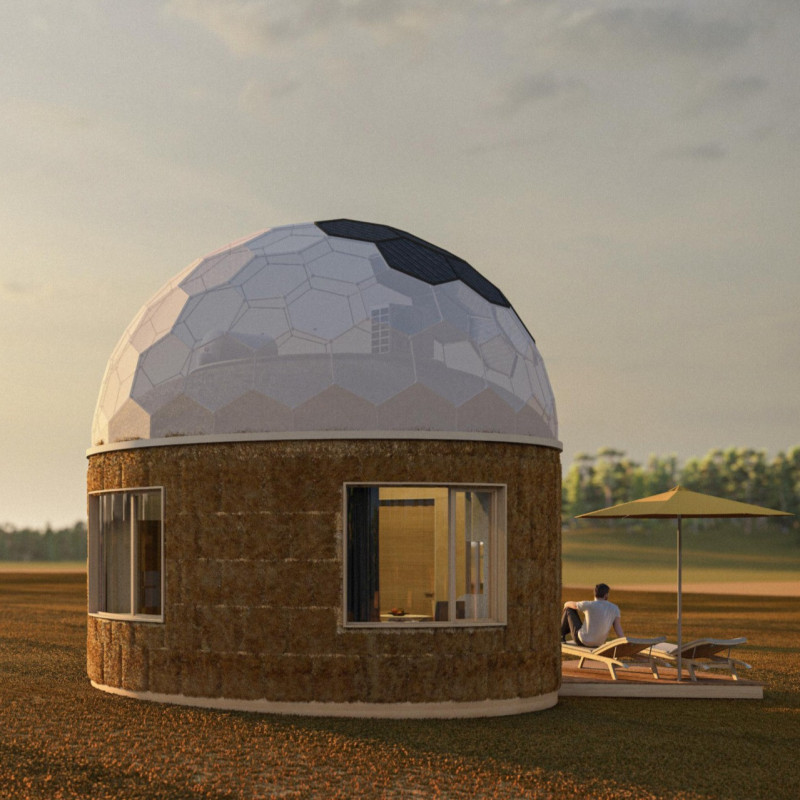5 key facts about this project
At the foundation of this architectural design is a commitment to sustainability and environmental consciousness. The design integrates green technologies and materials that align with contemporary expectations of ecological responsibility. Incorporating elements such as rainwater harvesting systems and photovoltaic panels demonstrates an understanding of environmental impact, making the building not only a shelter but a proactive participant in its ecosystem.
The layout of the structure reflects an intentional organization of spaces, allowing for seamless circulation and easy navigation. Open-concept areas are balanced by more intimate spaces, offering users a choice between community interaction and personal retreat. The strategic placement of windows maximizes natural light and encourages a sense of openness while minimizing the need for artificial lighting during the day. This thoughtful design approach contributes to the project’s overall efficiency and enhances the daily experience of its occupants.
The material palette further underscores the project's design aspirations. Concrete, glass, steel, wood, and stone are utilized to create a harmonious blend of textures and colors. The robust qualities of concrete provide a strong structural backbone, while glass allows for transparency and visual connectivity with the outdoors. Steel is employed judiciously, not only for structural support but also to add a sleek, modern aesthetic. The inclusion of wood softens the rigors of industrial materials, introducing warmth and a tactile quality that invites interaction. Finally, stone elements ground the design, adding a timeless quality and connection to the local landscape.
Unique design approaches are evident throughout the project, particularly in its engagement with the surroundings. The building does not merely occupy space; it interacts with it. Designed with respect to the natural topography, the architecture complements its environment rather than dominating it. Consideration has been given to the existing landscape, with features such as green roofs and native plant landscaping that provide ecological benefits and enhance the visual appeal.
The façade speaks to the integrity of the design, presenting a dynamic arrangement that shifts in character depending on the viewer's vantage point. This visual variability offers a sense of discovery, inviting passersby to engage with the building and explore its different aspects. Additionally, outdoor spaces are thoughtfully integrated with seating areas, gardens, and communal zones, promoting outdoor activities and enhancing social interaction.
Each detail within the project has been addressed with a focus on human experience. Lighting fixtures are strategically selected not just for function but as integral aspects of the aesthetic language, creating ambience and highlighting architectural features. The thoughtful selection of color schemes and finishes contributes to an overall sense of cohesion and comfort, making the interior spaces inviting and functional.
As you delve deeper into the architectural plans, sections, and designs, you will uncover the extensive thought and planning that has gone into every aspect of this project. Its blend of innovative architectural ideas and practical function serves as a model for future endeavors, illustrating how architecture can engage with space, context, and community needs. Exploring this project in greater detail may provide further insight into the intricate relationships between its design elements and intended architectural outcomes. We encourage you to investigate the presentation of this project to fully appreciate the nuances and intentions that shape its identity.


























